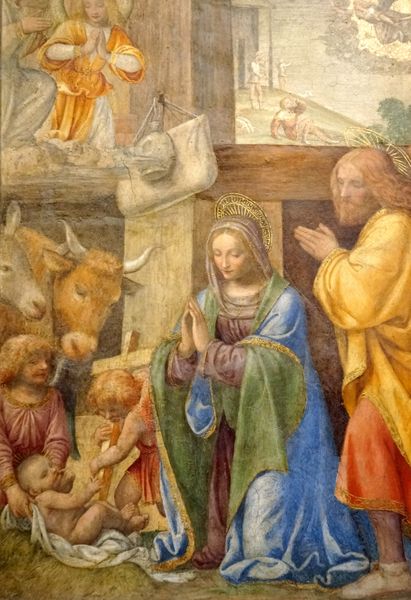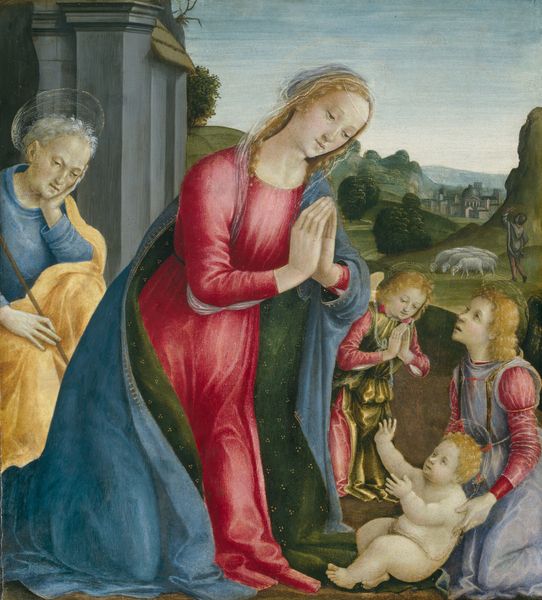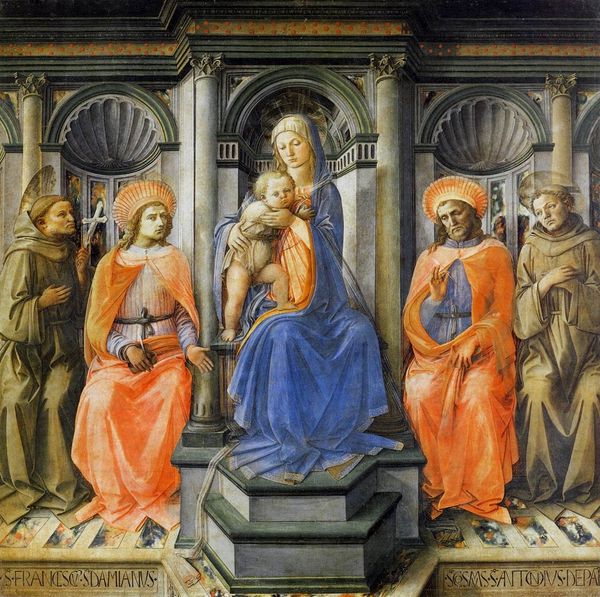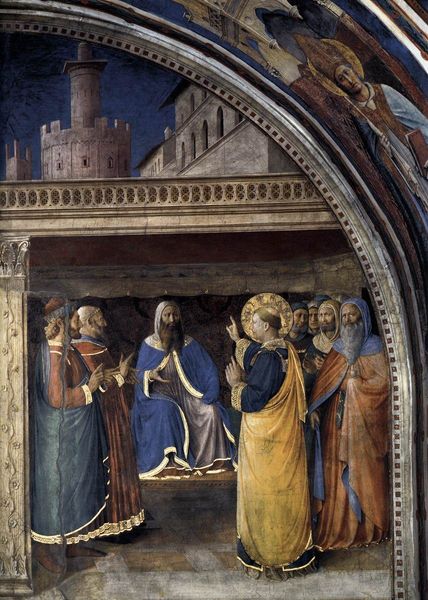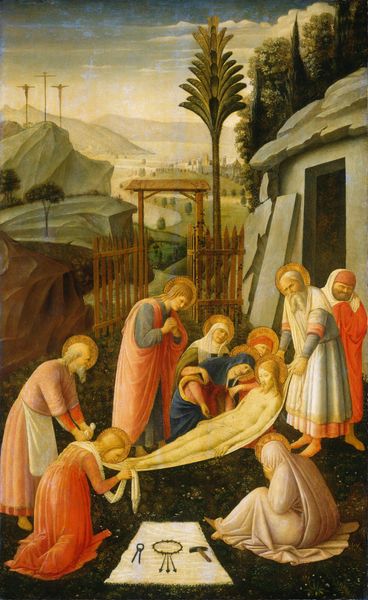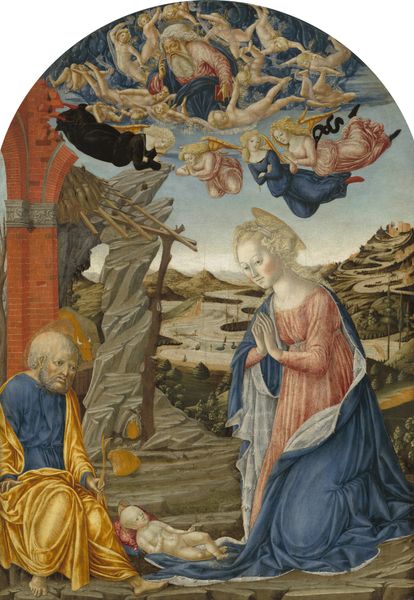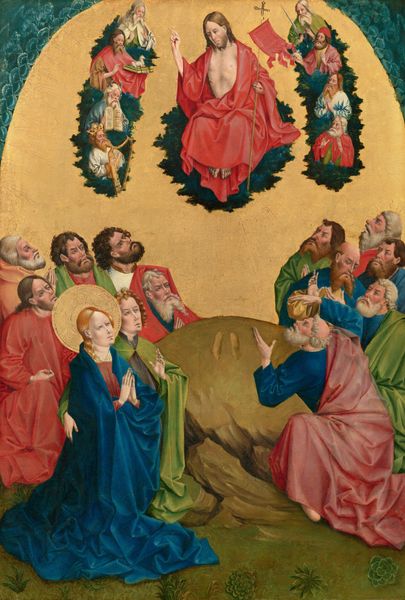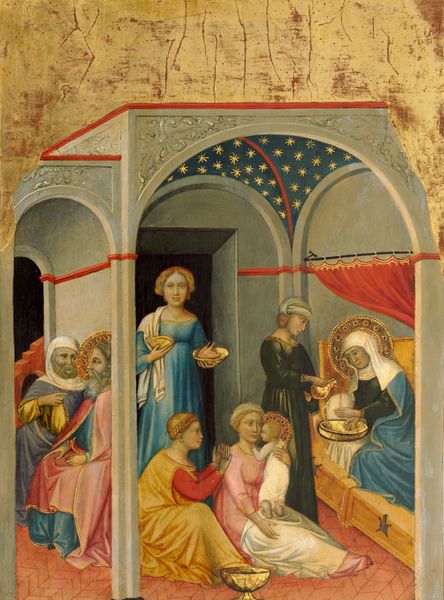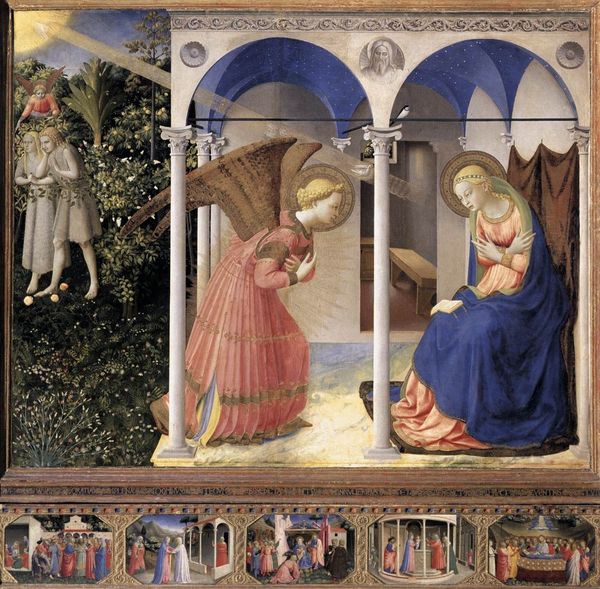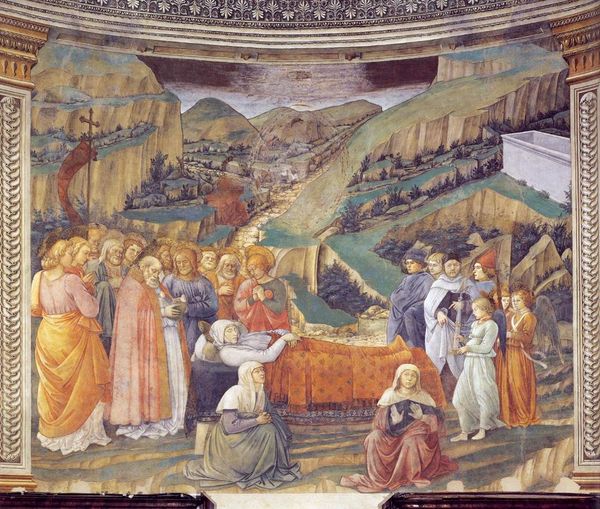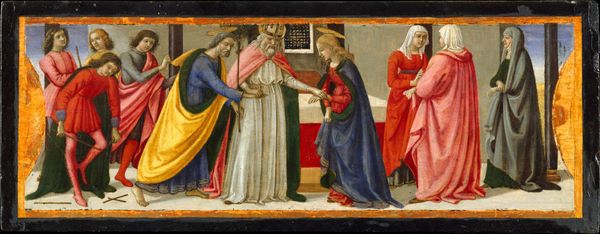
painting, oil-paint
#
painting
#
oil-paint
#
landscape
#
figuration
#
oil painting
#
child
#
christianity
#
history-painting
#
italian-renaissance
#
early-renaissance
#
portrait art
#
christ
Copyright: Public domain
Curator: Looking at this detail from Filippo Lippi's "Adoration of the Magi," an early Renaissance oil painting, I'm struck by the layering of societal roles and identities at play within this traditional biblical scene. Editor: The immediate sense is one of serene intimacy amidst a grand, somewhat chaotic landscape. There’s a quiet awe in the gestures, and the colour palette reinforces that—a gentle luminescence. Curator: Absolutely. The representation of the magi themselves becomes an important reflection on status. We must also not forget the Italian Renaissance took shape alongside a period of growing colonialism, the subjugation and ultimate erasure of non-white people, something rarely accounted for within depictions such as this. Editor: Notice the repeating motif of the halo, and the ways in which its circular shape mirrors the tondo format of the work itself. The halo signifies the divine status of Jesus, Mary, and Joseph, but also hints at notions of completeness. Curator: I agree; the composition almost echoes a hierarchical structure reflecting social strata, which seems inherently intertwined with performative and visual power. This is early-modernity, and visual language has become essential in how the elites portray themselves, creating legacies for generations. Editor: What I also find interesting is that each figure directs their gaze to someone or something specific. Note, for instance, how one magus makes direct contact with the Christ child through his hands, enacting the precise moment when divinity and humanity connect through this powerful, shared motif of human touch. Curator: Yet in celebrating this historical perspective through a contemporary lens, we're confronted by our own historical location. What power dynamics are we replicating when we fail to unpack the work's complicity with the burgeoning power structures of its time? Editor: The universality of the story shines through the work's visual and thematic structures, but seeing your interpretation has encouraged me to reconsider the painting’s function. Curator: It's a dialogue. These objects from the past only become relevant through an understanding of their history and what they mean for today's pressing questions. Editor: It certainly provides a compelling new perspective on well-known imagery. Thanks!
Comments
No comments
Be the first to comment and join the conversation on the ultimate creative platform.
